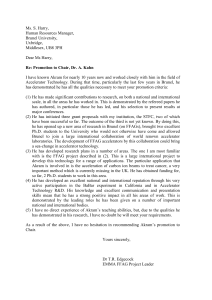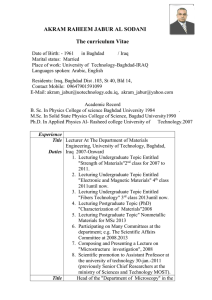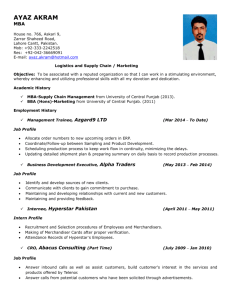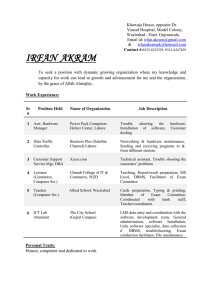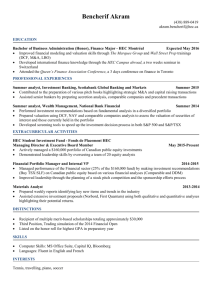Counter-Rocket, Artillery, Mortar (C-RAM)
advertisement
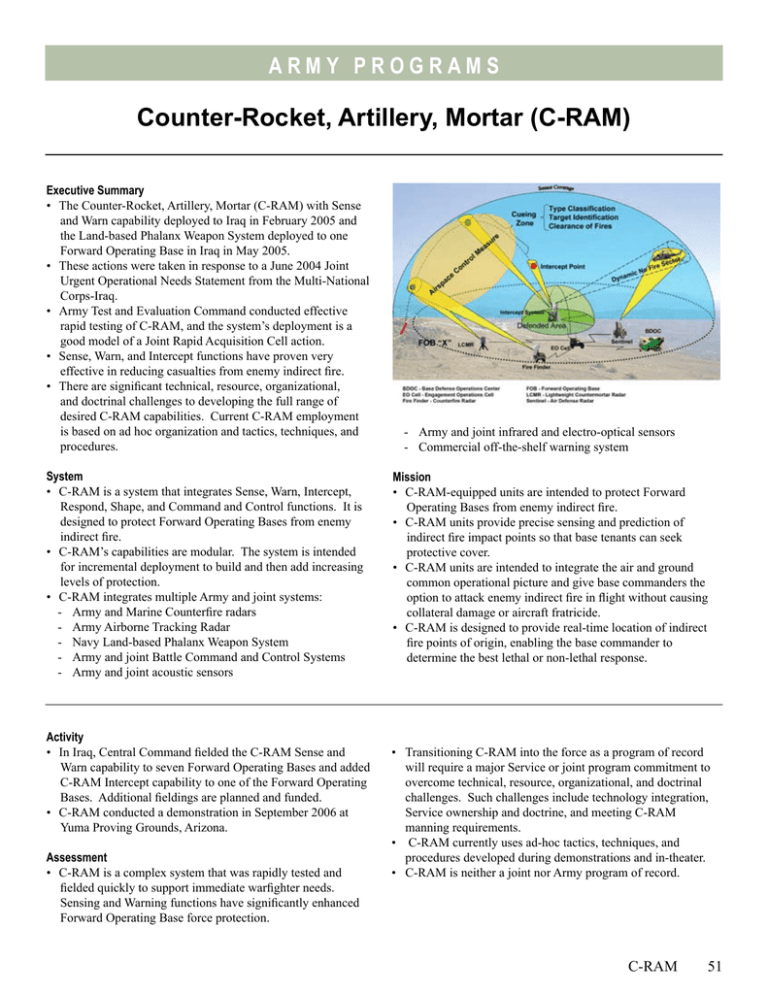
A r my P RO G R A M S Counter-Rocket, Artillery, Mortar (C-RAM) Executive Summary • The Counter-Rocket, Artillery, Mortar (C-RAM) with Sense and Warn capability deployed to Iraq in February 2005 and the Land-based Phalanx Weapon System deployed to one Forward Operating Base in Iraq in May 2005. • These actions were taken in response to a June 2004 Joint Urgent Operational Needs Statement from the Multi-National Corps-Iraq. • Army Test and Evaluation Command conducted effective rapid testing of C-RAM, and the system’s deployment is a good model of a Joint Rapid Acquisition Cell action. • Sense, Warn, and Intercept functions have proven very effective in reducing casualties from enemy indirect fire. • There are significant technical, resource, organizational, and doctrinal challenges to developing the full range of desired C-RAM capabilities. Current C-RAM employment is based on ad hoc organization and tactics, techniques, and procedures. System • C-RAM is a system that integrates Sense, Warn, Intercept, Respond, Shape, and Command and Control functions. It is designed to protect Forward Operating Bases from enemy indirect fire. • C-RAM’s capabilities are modular. The system is intended for incremental deployment to build and then add increasing levels of protection. • C-RAM integrates multiple Army and joint systems: - Army and Marine Counterfire radars - Army Airborne Tracking Radar - Navy Land-based Phalanx Weapon System - Army and joint Battle Command and Control Systems - Army and joint acoustic sensors Activity • In Iraq, Central Command fielded the C-RAM Sense and Warn capability to seven Forward Operating Bases and added C-RAM Intercept capability to one of the Forward Operating Bases. Additional fieldings are planned and funded. • C-RAM conducted a demonstration in September 2006 at Yuma Proving Grounds, Arizona. Assessment • C-RAM is a complex system that was rapidly tested and fielded quickly to support immediate warfighter needs. Sensing and Warning functions have significantly enhanced Forward Operating Base force protection. - Army and joint infrared and electro-optical sensors - Commercial off-the-shelf warning system Mission • C-RAM-equipped units are intended to protect Forward Operating Bases from enemy indirect fire. • C-RAM units provide precise sensing and prediction of indirect fire impact points so that base tenants can seek protective cover. • C-RAM units are intended to integrate the air and ground common operational picture and give base commanders the option to attack enemy indirect fire in flight without causing collateral damage or aircraft fratricide. • C-RAM is designed to provide real-time location of indirect fire points of origin, enabling the base commander to determine the best lethal or non-lethal response. • Transitioning C-RAM into the force as a program of record will require a major Service or joint program commitment to overcome technical, resource, organizational, and doctrinal challenges. Such challenges include technology integration, Service ownership and doctrine, and meeting C-RAM manning requirements. • C-RAM currently uses ad-hoc tactics, techniques, and procedures developed during demonstrations and in-theater. • C-RAM is neither a joint nor Army program of record. C-RAM 51 A r my P RO G R A M S Recommendations • Status of Previous Recommendations. No FY05 report was submitted on C-RAM. • FY06 Recommendations. 1. The C-RAM program office should continue to test enhancements prior to fielding. 52 C-RAM 2. The Army Test and Evaluation Command should continue to provide valuable insights on performance to support the fieldings.
